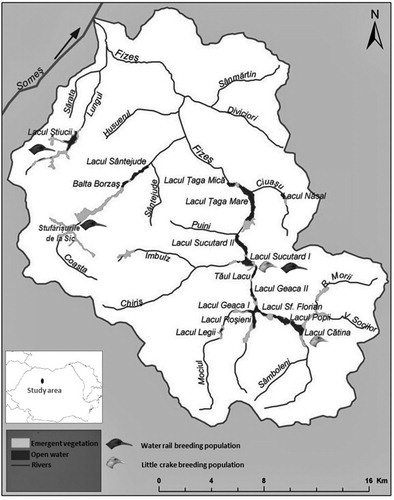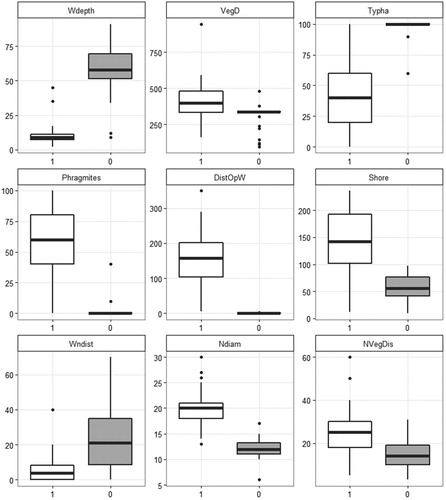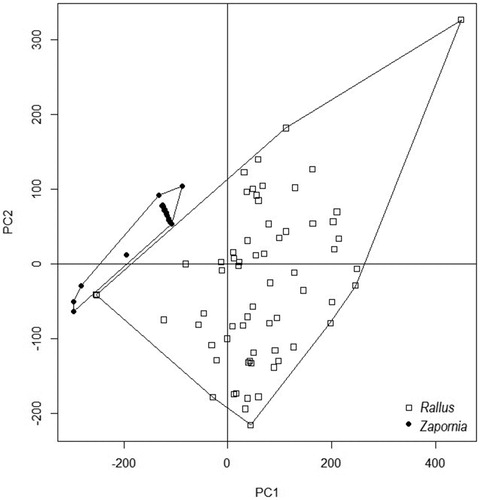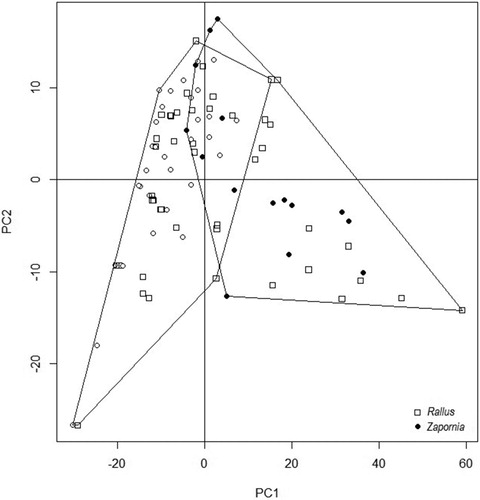Figures & data
Figure 1. Study area location, wetlands, and distribution of breeding populations of Water Rails and Little Crakes in the Fizeş Basin, Romania.

Figure 2. Comparison of nest site characteristics of Water Rails (1) and Little Crakes (0) (Boxplots: horizontal bar = median, whiskers = last observation within 1.5 times the interquartile range). Features are: water depth (Wdepth, cm), vegetation density (VegD, stems/m2), cattail percentage cover (Typha, %), reed percentage cover (Phr, %), distance to open water (DistOpW, m), distance to the shore (Shore, m), nest diameter (Ndiam, cm), distance from the water surface to the centre of the nest cup bottom (Wndist, cm) and distance from inside the nest cup to the nearest upright vegetation (NvegDis, cm).

Table 1. Summary of nesting site characteristics and nest habitat features of Water Rails and Little Crakes. Parametric (ANOVA; F statistic) and nonparametric (Kruskal–Wallis; H statistic) one-way models compare differences between the two species. Features are: water depth (Wdepth, cm), vegetation density (VegD, stems/m2), cattail percentage cover (Typha, %), reed percentage cover (Phr, %), distance to open water (DistOpW, m), distance to the shore (Shore, m), nest diameter (Ndiam, cm), distance from the water surface to the centre of the nest cup bottom (Wndist, cm) and distance from inside the nest cup to the nearest upright vegetation (NvegDis, cm).
Figure 3. Two-dimensional ordination of nest site habitat characteristics of Water Rails (Rallus) and Little Crakes (Zapornia).

Figure 4. Two-dimensional ordination of nest features of Water Rails (Rallus) and Little Crakes (Zapornia).

